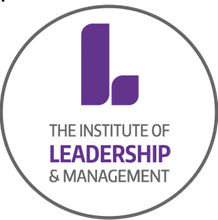Following the launch of our ‘Leading public services in a digital future’ research in April 2021, the Institute convened the first in a series of investigations addressing future leadership challenges in the public sector. Our initial discussions, with a group of senior NHS leaders, considered what agile leadership means in the context of today’s NHS.
Our goal is to share the insights acquired during that conversation and disseminate knowledge on what ‘agile leadership’ looks like in the context of the NHS. We had the opportunity to discuss some of the most pressing challenges currently affecting our National Health Service, and to explore some of the ways in which people working within it can utilise agile leadership skills and strategies to maintain and improve the quality of healthcare.
So, what is ‘agile leadership’, and what does it look like in action? Volatility, Uncertainty, Complexity and Ambiguity are doubtless words that resonate with all of us as vivid and accurate descriptors of the previous 18 months for numerous reasons. That said, it’s clear that in many ways NHS staff and other healthcare professionals have been amongst those most affected by the pandemic, certainly within their working environments.
Key points emerging from our discussion:
Our ‘why?’ for agile leadership
Why is it so important? Whilst it may not be our preferred or ideal set of circumstances, the world is currently volatile, uncertain, complex and ambiguous (VUCA). What this means in practice is that agility is a necessity rather than a ‘nice to have’, and the implementation of ‘agile leadership strategies’ are a pragmatic acknowledgement of this truth.
Who needs to be involved?
The answer to this is everybody, because there can be superb examples of agility at an operational level. Unless the concept is understood and intentionally implemented and celebrated amongst senior leadership teams, agile behaviours will remain aberrations or departures from the norm, as opposed to an organisation’s default position.
What do they need to do?
Having established that becoming an agile organisation is both necessary and requires the input of everyone, we now need to establish exactly what is required, and in this there are three key criteria:-
-
Responsibility
-
Accountability
-
Authority
It is typically the last of these that organisations find the most challenging, as leaders and managers often find relinquishing control to be difficult, and the NHS has at least two evident characteristics that exacerbate these difficulties. The first is that as an aggregate the NHS is a very large organisation with a huge role in society, and the second is that it is extremely highly regulated. Within this context, it’s clear that devolving authority entirely to those working at the point of care is not simple, fair, or practicable.
When does it need to happen?
When driving we are consistently looking to acquire data that will give us the clearest possible indication of what is ahead, and our field of vision includes but is not limited to the vehicle immediately in front of us - but there is subconscious acknowledgment that there are other factors at play. Agile leadership encourages and enables organisations and people to take a similar approach. In today’s world, things can change quickly, and it’s testament to the staff of organisations including the NHS that many areas of their organisation(s) were forced to shapeshift and adapt almost instantaneously to circumstances that were entirely unexpected in March 2020. Throughout the pandemic the NHS has demonstrated agility, certainly at the operational level, and our panel identified the following major challenges where agile leadership is needed:
Challenges for the NHS
1. At the operational level of interface with service users, the NHS certainly demonstrates and displays agile behaviour, yet the closer one gets to the people who are not affected by the service - the policy makers - the less agile the conversations become. The enormous contribution the NHS makes to UK’s society and economy means such conversations are extraordinarily ‘strategic’ yet also frequently vague, being subject to five-year election cycles.
2. There are two ladders to seniority, one clinical/ technical and one administrative. There are similarities here with construction, oil and gas, and aerospace, all having two separate pathways to senior leadership. Those people with the language, the qualifications, and the networks associated with leadership and management are able to progress without technical knowledge, and often further on the leadership ladder.
3. The COVID-19 pandemic would have been catastrophic for the UK had the NHS not been agile, and able to pivot with alacrity, based on a willingness at operational level to accept responsibility and accountability for decision making. Post-pandemic the challenge is to retain that more agile approach and not to revert to what was before. (NHS Confederation, 2020)
4. Agility is founded upon accurate, relevant and timely data, and competitive advantage is derived from the way data is processed. The NHS has more data than almost any other organisation, and the challenge is how to use that data to present a compelling case for the NHS of the future.
How can the NHS move forward?
The panel considered how the NHS might embrace the principles of agile leadership in its own context and what steps, approaches and interventions might help deliver an agile culture.
1. The importance of coaching
Life requires us to be agile, an agility (physical and mental) that we often have as children but lose as we get older. Coaching can facilitate acquiring, or re-discovering, that essentially agile mindset and learning the habits of freedom, including the freedom to make the right decision. Our own research at the Institute has previously identified the increasing importance of creating a coaching culture, and the capability gap that exists without it.
2. Work shadowing
Shadowing people during the course of a varied and eventful day or more can be interesting, informative and enlightening. Not only does it signal a culture of transparency, and generate important insights into other parts of large organisations, it also provides networking opportunities.
3. Leading beyond authority
Agility requires leaders who can influence solutions to problems other than their own, outside their own departments or organisations, because the challenges of VUCA environments extend beyond organisational and functional boundaries.
4. Measure progress
Leaders need to demonstrate a willingness to measure and to work with metrics which are increasingly outside their experience – and their comfort zone.
Key considerations for agile leadership
The panel agreed that an ability to be agile is a capability that needs to be acquired and retained, and then considered the key factors in recognising and embedding an organisational approach to agility:
1. Context – Agility is context sensitive and context specific, not a character trait but a pattern of behaviour that needs to be demonstrated and displayed
2. Timeline - Agility is not a ‘state of grace’ – an organisation does not become ’agile’ at a point in time and remain like that. It is always a work in progress because context never stops changing
3. Metrics - The purpose of leadership is to deliver an outcome that cannot be achieved more efficiently any other way, and appropriate metrics need to be identified to more ably, clearly and effectively demonstrate those better outcomes.
What next?
We continue to explore the skills and capabilities needed by public service leaders to adapt to new and different demands of public service. Each discussion convened by the Institute of Leadership & Management, presents new questions and explores new solutions. The conversation continues and as with any agile approach, it doesn’t stop.
With special thanks to those who contributed to our NHS discussion group.




